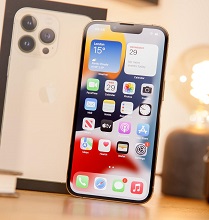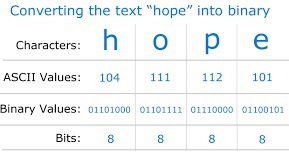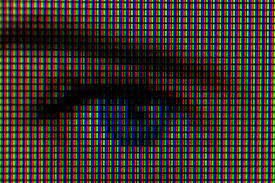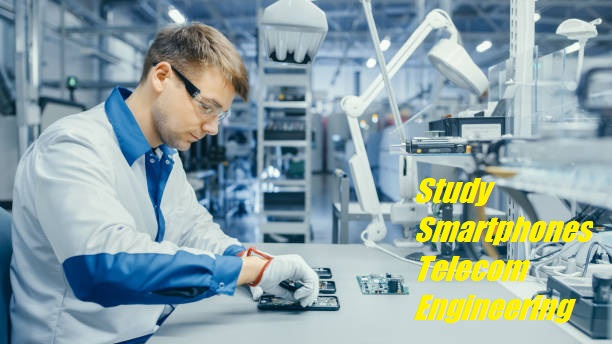List of Universities to Study Smart Phone and Telecommunication Engineering. Digital life has come to stay and it has transformed the entire world. right from the stone age till today, the world and her habitats are always benefiting from technological inventions and developments, especially in the aspect of the smartphone and telecommunication, such technologies are not taught in every university. but few universities teach smartphone and telecommunication engineering or manufacturing. please read through this article titled list of universities to study smartphone and telecommunication engineering.

but let’s summarize a little on how smartphone communication works
How does a smartphone or computer convert an analog signal into digital?
Smartphones possess the ability to smartly convert data from analog (physical) to digital display and these processes are done right inside the smartphone. this conversion could be images, sound, text, or environmental data such as weather. this conversion is being done with the help of the smartphone microprocessor. and each conversion can be done in less than 1 millisecond.
The smartphone usually read the input and stores the data in its memory, The program formats the data following the program instructions. The formatted data is sent to the microprocessor that will display the output
According to programiz, the smartphone which is considered a micro-computer uses the binary system. The term ‘binary’ means something that has only two possible objects or states. In the binary number system, these two objects are the numbers 0 and 1. These two numbers can represent a variety of things which maybe voice, text, images or sensor data.
For example, in computer logic, 0 represents “false” while 1 represents “true”. Or they could be used to represent ordinary numbers as combinations of 1’s and 0’s. An example of this would be the representation of the numbers 0, 1, 2, 3, and 4 in three binary digits as 000, 001, 010, 011, and 100 respectively.
Smartphones work with electrical signals generated by these circuits. To design a smartphone that runs efficiently, we need a system that can interpret electrical signals in a simplified and effective manner.
A good way of doing this is to interpret electrical signals as binary values: 0 for a low voltage value and 1 for a high voltage value. An easier way of thinking about this is to imagine a light bulb. If the bulb is off, that state is interpreted as having the value 0. If it is on, it is interpreted as having a value of 1.
Smartphones use a logic system and this logic system is known as Boolean logic, formulated by the English mathematician George Boole during the 19th Century.
Smartphones use this form of logic to make decisions all the time. These decisions result in our smartphones taking a particular course of action instead of another.

Smartphone Text and Character Conversion are much different from the binary system but with similarities. The most common systems for representing characters are ASCII (American Standard Code for Information Interchange) and Unicode (an ASCII extension). These systems assign unique numeric values to characters and store them in binary format.
Let’s take, for example, the ASCII system originally used 7 bits to represent a character. Currently, that has been extended to 8 bits. As an example, the character A is represented by a numeric value of 65 in ASCII. The binary for 65 is 1000001. Notice that the binary representation consists of 7 bits. In extended ASCII, this will be stored as 01000001 so that the total number of bits is 8.
Similarly, the ASCII code for the character a is 97, and it is represented by 01100001 in extended ASCII. There are also very special characters that are represented by 0, 1, 2, and so on. And they are represented as 00000000, 00000001, 00000010, and so on.
This system serves well for representing English and certain European characters and symbols, but it is woefully inadequate for representing symbols from languages across the world. In order to accommodate further symbols, Unicode was developed.
Unicode originally used 21 bits per symbol as opposed to the 7 bits originally used by ASCII. This greatly expands the range of values that can be used to represent characters. The original ASCII codes are accommodated within the Unicode system.
Currently, an encoding system based on Unicode, called UTF-8, is the most commonly used encoding system in web applications. The UTF-8 can use up to 32 bits per symbol, which means it can represent an even larger variety of characters.

For images and pixels, Do you know, that images are also frequently represented by numbers? In smartphones, images are most commonly made with the help of tiny colored squares called pixels, an image or pattern is made by combining numerous small, colored pieces. where we combine smaller pieces to create a bigger, complete image
Pixels work in a way that Thousands of tiny colored squares make up the images that are displayed on our smartphone screens. There are many ways the colors in the pixels are coded, but the most commonly used code is the RGB code (Red, Green, Blue).
Red, Green, and Blue (RGB) binary codes work by combining red, green, and blue colors to produce all the shades of colors seen on smartphones. Each of the three colors is assigned with a code number from 0 to 255.
For example, let’s represent colors code (RGB code) with 142, 150, and 123. This color code has 3 components: Red = 142, Green = 150, and Blue = 123.
Inside our smartphones, each of these color components is represented by their binary equivalents using 8 bits and then combined. e.g, the binary for 142 (Red component) is 10001110, the binary for 150 is 10010110, and the binary for 123 is 1111011.
Red = 142 = 10001110
Green = 150 = 10010110
Blue = 123 = 01111011

The smartphone combines these numbers from left to right to store the RGB code in its memory.
Complete RGB code = 100011101001011001111011
Telecommunication Engineering
In telecommunication engineering plays a big role in smartphone telecommunication. a smartphone does not use wires to transfer analog voices. when a someone speak into a smartphone, a microphone turns your voice into electrical signals. . A microchip (ADC) in the smartphone modulates (or varies) a radio wave using the electrical signal. The radio wave travels through the air to a nearby cell tower, the tower sends your voice to the person you are calling and the process is reversed so that the person on the other end can hear your voice. click here to watch a visual video on the principles of telecommunication.
List of USA and UK Schools to Study Smartphone and Telecommunication Engineering Course
- New York University
- University of Huddersfield
- Cardiff University
- Southern Methodist University
- University of Maryland – College Park
- University of Denver
- Clark College
- Elgin Community College
- College of Southern Nevada
- St. Ambrose University
- George Mason University
- Georgia College
